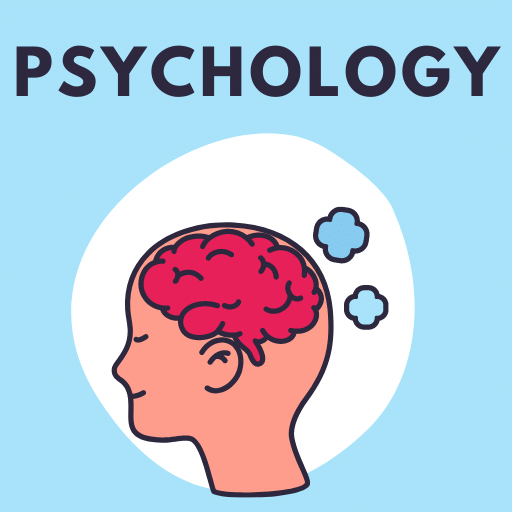Passage Based Questions: Pattern of Social Inequality and Exclusion | Sociology Class 12 - Humanities/Arts PDF Download
Passage - 1
Direction: Read the following text and answer the questions based on it: (2 marks each)
Passage:
“State action alone cannot ensure social change. In any case, no social group howsoever weak or oppressed is only a victim. Human beings are always capable of organizing and acting on their own – often against very heavy odds – to struggle for justice and dignity. Dalits too have been increasingly active on the political, agitational, and cultural fronts. From the pre-Independence struggles and movements launched by people like Jyotiba Phule, Iyothee Thass, Periyar, Ambedkar and others (See Chapter 3) to contemporary political organizations like the Bahujan Samaj Party in Uttar Pradesh or the Dalit Sangharsh Samiti of Karnataka, Dalit political assertion has come a long way. (For an example of a contemporary struggle, see Box 5.3) Dalits have also made significant contributions to literature in several Indian languages, especially Marathi, Kannada, Tamil, Telugu, and Hindi. (See Box 5.4 which features a short poem by the well-known Marathi Dalit poet, Daya Pawar.)
D for Dalit, D for Defiance
Gohana is a small, dusty town on the Sonepat-Rohtak highway of Haryana with billboards promising progress… Past the town square, Gohana’s largest Dalit neighborhood, Valmiki Colony, has risen from the ashes. On 31 August 2005, it was looted and burnt by a mob of Jats after a Jat youth was killed in a scuffle with some Dalit youngsters. Dalits had fled their homes fearing attacks by Jats after the murder; the patrolling police had chosen not to stop the mobs from torching 54 Dalit houses. “The arson was the Jats’ way of teaching the Dalits a lesson,” said Vinod Kumar, whose house was burnt. “The police, administration and the government are dominated by Jats; they simply watched our houses burn.”
Q1: What is the definition of a backward class?
Ans: A backward class refers to a majority group that has become weak due to social, religious, economic, and geographical factors. The people belonging to this class were exploited to such an extent in the past that, even after the aid of various government policies, they still remain underdeveloped.
Q2: Who founded the Satya Shodhan Samaj and for what purpose?
Ans: The Satya Shodhan Samaj was founded by Jyotiba Phule in 1873 with the aim of aiding two groups considered the lowest in traditional Brahmin culture: women and untouchables.
Q3: How is a Totem defined?
Ans: A totem is a being, object, or symbol representing an animal or plant that serves as an emblem of a group of people such as a family, clan, group, tribe, etc., reminding them of their ancestry. The Totem system is considered sacred and is worshipped.
Q. 4. What does prejudice mean?
Ans: Prejudices refer to preconceived opinions or attitudes held by members of one group towards another.
Passage - 2
Direction: Read the following passage and answer the questions that follow:
Passage:
“In the areas where tribal populations are concentrated, their economic and social conditions are usually much worse than those of non-tribals. The impoverished and exploited circumstances under which adivasis live can be traced historically to the pattern of accelerated resource extraction started by the colonial British government and continued by the government of independent India. From the late nineteenth century onwards, the colonial government reserved most forest tracts for its own use, severing the rights that adivasis had long exercised to use the forest for gathering produce and for shifting cultivation. Forests were now to be protected for maximizing timber production. With this policy, the mainstay of their livelihoods was taken away from adivasis, rendering their lives poorer and more insecure. Denied access to forests and land for cultivation, adivasis were forced to either use the forests illegally (and be harassed and prosecuted as ‘encroachers’ and thieves) or migrate in search of wage labor.”
Q1: What is Shifting Agriculture?
Ans: Shifting agriculture is the practice where, when the productivity of an agricultural area starts to decline, the farmer leaves that place barren for a period to allow it to regain its lost nutrients. Meanwhile, they move to another area and commence agriculture there. This practice is known as shifting agriculture.
Q2: What are four key characteristics of a Tribe?
Ans:
(i) The tribe has its own geographical area.
(ii) The tribe possesses a distinct culture.
(iii) The tribe generally lives in an undeveloped condition.
(iv) Each tribe has its own unique name, language, and tradition.
Q3: What are four major problems faced by tribal people?
Ans:
(i) Tribal people are often very poor.
(ii) Tribal people generally have low literacy rates.
(iii) Superstitions are commonly found among tribal communities.
(iv) Tribal people are often exploited by urban populations.
Passage - 3
Direction: Read the following passage and respond to the questions that follow:Passage:
“In India, labels such as ‘disability’, ‘handicap’, ‘crippled’, ‘blind’, and ‘deaf’ are often used interchangeably. These terms are frequently used as insults. In a culture that values bodily ‘perfection’, any deviation from the ‘perfect body’ is seen as abnormality, defect, and distortion. Labels such as bechara (poor thing) reinforce the victim status of the disabled person. Such attitudes are rooted in cultural conceptions that view an impaired body as a result of fate. Destiny is often seen as the culprit, and disabled people are viewed as victims. The common perception considers disability as retribution for past karma (actions), with no possibility of reprieve. The dominant cultural narrative in India therefore sees disability as an inherent characteristic of the individual. Popular images in mythology often portray the disabled in a very negative light. The very term ‘disabled’ challenges these assumptions. Terms such as ‘mentally challenged’, ‘visually impaired’, and ‘physically impaired’ have replaced the more derogatory terms such as ‘retarded’, ‘crippled’, or ‘lame’. People are disabled not because they are biologically impaired, but because society renders them so.”
Q1: How is poverty related to disability?
Ans: Poverty and disability are closely linked. Factors such as malnutrition, mothers weakened by frequent childbirth, inadequate immunization programs, and accidents in overcrowded homes all contribute to a higher incidence of disability among poor people.
Q2: Why is social inequality considered social?
Ans: Social inequality and exclusion are not just about individuals but about different groups within society. They are called social because they are systematic, structured, and not merely economic.
Q3: What does the term social stratification mean?
Ans: Social stratification refers to a system by which categories of people in a society are ranked in a hierarchy. This hierarchy influences people’s identities, experiences, relationships with others, and their access to opportunities.
|
62 videos|151 docs|25 tests
|
FAQs on Passage Based Questions: Pattern of Social Inequality and Exclusion - Sociology Class 12 - Humanities/Arts
| 1. What is the pattern of social inequality and exclusion discussed in the article? |  |
| 2. How does social inequality impact individuals in the field of humanities/arts? |  |
| 3. What are some examples of social exclusion in the humanities/arts field? |  |
| 4. How can society address social inequality and exclusion in the humanities/arts field? |  |
| 5. What role do individuals and institutions play in combating social inequality and exclusion in humanities/arts? |  |

























